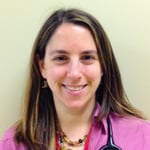As it became apparent in early March that COVID would become a global and not only local problem, health systems had to transition from a focus on individual patients who might have been exposed to thinking about a population-guided response. Thus, Cambridge Health Alliance (CHA), an academic community healthcare system based in the Boston area, developed a comprehensive plan for COVID guided by the goal of “most lives and life years saved” that spanned both the hospital and the ambulatory space. This transition happened urgently and iteratively: in a few short weeks, we went from screening individual patients for travel to China, and then to a handful of five countries with outbreaks, to screening patients for symptoms of COVID, to caring for thousands of patients at the epicenter of the Massachusetts outbreaks. The United States has become the country now most affected by the pandemic with over 1 million confirmed cases.
Against this backdrop, we found the role of primary care was clear: focus on preventive and upstream care—it’s what we have always done best. We recognized that the new rallying cry to “flatten the curve” was in our wheelhouse of prevention. This is something that is simply not achievable inside a hospital, but it is possible through a community and public health-facing response. In all healthcare, not just that related to a pandemic, we achieve better outcomes both for individuals and for populations by focusing on preventing disease in the first place and mitigating its effects. A patient who never gets diabetes has better long-term health outcomes than a patient with diabetes who does an excellent job of controlling her blood sugars. This individual strategy, though focused on only one patient, benefits the population by preserving resources for others. Our approach, in the setting of the acute pandemic, mirrored our two-pronged approach to usual care: to simultaneously care for individuals and populations. Thus, we focused on excellent primary care and on a comprehensive strategy for disease management with prevention at its core.
Recent reports have demonstrated an eerie absence of patients presenting for stroke or heart failure exacerbations, especially in places with high burdens of COVID. Rather than concluding that there has been a decrease in these medical issues, we know that patients are, understandably, minimizing symptoms and deferring care. And indeed, we have evidence from other epidemics, such as swine flu in 2009, that suggest nearly as many people could die of complications related to decreased provision of medical care for chronic conditions when the focus of hospital systems turns to a singular need.
At CHA, we have focused on high-impact prevention strategies like prioritizing the vaccinations of our youngest patients with proactive outreach to schedule well child appointments. We have additionally committed to continued management of chronic diseases like hypertension and diabetes, while simultaneously reaching out to our highest-risk patients to ensure they have adequate supplies of medications. Using registries, we reached out to high-risk patients with chronic illnesses to ensure they were comfortable with the concept of physical distancing and to advise them that they particularly should consider staying home. Ultimately, to keep our patients and staff safe, we chose to close 10 out of 12 of our primary care clinics, with two clinics serving as regional hubs for acute needs. We transitioned the vast majority of our care to a telemedicine model so we could continue to care for our patients, reaching about 75% of our usual primary care visit volume in only three weeks.
At the same time, we created a program to manage COVID in the outpatient space. Although the focus in the media, and perhaps in the collective consciousness, has been on the sickest COVID patients in hospitals, we know that approximately 80% of COVID patients have a milder course. For patients with symptoms of COVID, we created a comprehensive strategy. We created a triad of structures integrated with primary care to address COVID-related concerns.
First, when patients call with symptoms of COVID or questions related to COVID, they reach a triage center staffed by 14 nurses in addition to an operational support staff and three providers. The triage center evaluates patients’ symptoms and determines whether patients require urgent in-person evaluation. Though the vast majority do not, those who do are seen in our second new structure, a primary care directed respiratory clinic. Staff here are trained to exclusively focus on the evaluation of COVID with an eye to identifying cases that may need to be referred to the emergency department. Finally, we created a community management arm in which a group of providers and support staff manage panels of patients with COVID or COVID-like symptoms and who follow these patients telephonically throughout the course of their disease. Patients may be sent or return to the respiratory clinic only in cases where in-person evaluation is needed. Throughout this continuum, a consistent and deliberately redundant focus on advising patients to self-isolate to contain the disease is interwoven with all touchpoints.
One consequence of this strategy is that patients do not need to use the emergency department or other hospital-based services unless they truly require them, such as if we find someone with an abrupt change in course. Our patients with worsening symptoms and high-risk factors are seen in our respiratory clinic and of these, only 5% ultimately require a trip to the emergency department. Based on usual triage advice alone, it is likely that all or nearly all of these patients would have presented to the emergency department if our system had not developed this response.
Ultimately, the focus on “flattening the curve” is meaningful, and yet our country’s singular focus on hospital-based care has detracted from the ability of many health systems and political entities to appropriately target their resources to outpatient COVID management and primary care for prevention and mitigation. In addition to the pivotal role of public health, it is in the primary care space that we make the most difference for our populations. This reality only serves to reflect the guiding purpose of primary care, namely to prevent disease and its complications well before patients need more aggressive care. Among the silver linings we can identify during this tragic time is the hope that this truth will be one of the lessons we and our health systems carry with us as we emerge from the pandemic.
**Feature photo obtained with standard license on Shutterstock.
Interested in other articles like this? Subscribe to our bi-weekly newsletter

Jessamyn Blau, MD, MA, MPhil, is an Internal Medicine Physician at Cambridge Health Alliance (CHA), Outpatient Director of COVID management for CHA, and Medical Director of the CHA Broadway Care Center. She has a unique background in political science and is committed to radical thinking about healthcare reform. Dr. Blau is passionate about addiction medicine, quality and process improvement, and medical education.
 Lora Council, MD, MPH, is the senior Medical Director for Primary Care at Cambridge Health Alliance and is board-certified in Family Medicine.
Lora Council, MD, MPH, is the senior Medical Director for Primary Care at Cambridge Health Alliance and is board-certified in Family Medicine.
- Share
-
Permalink


